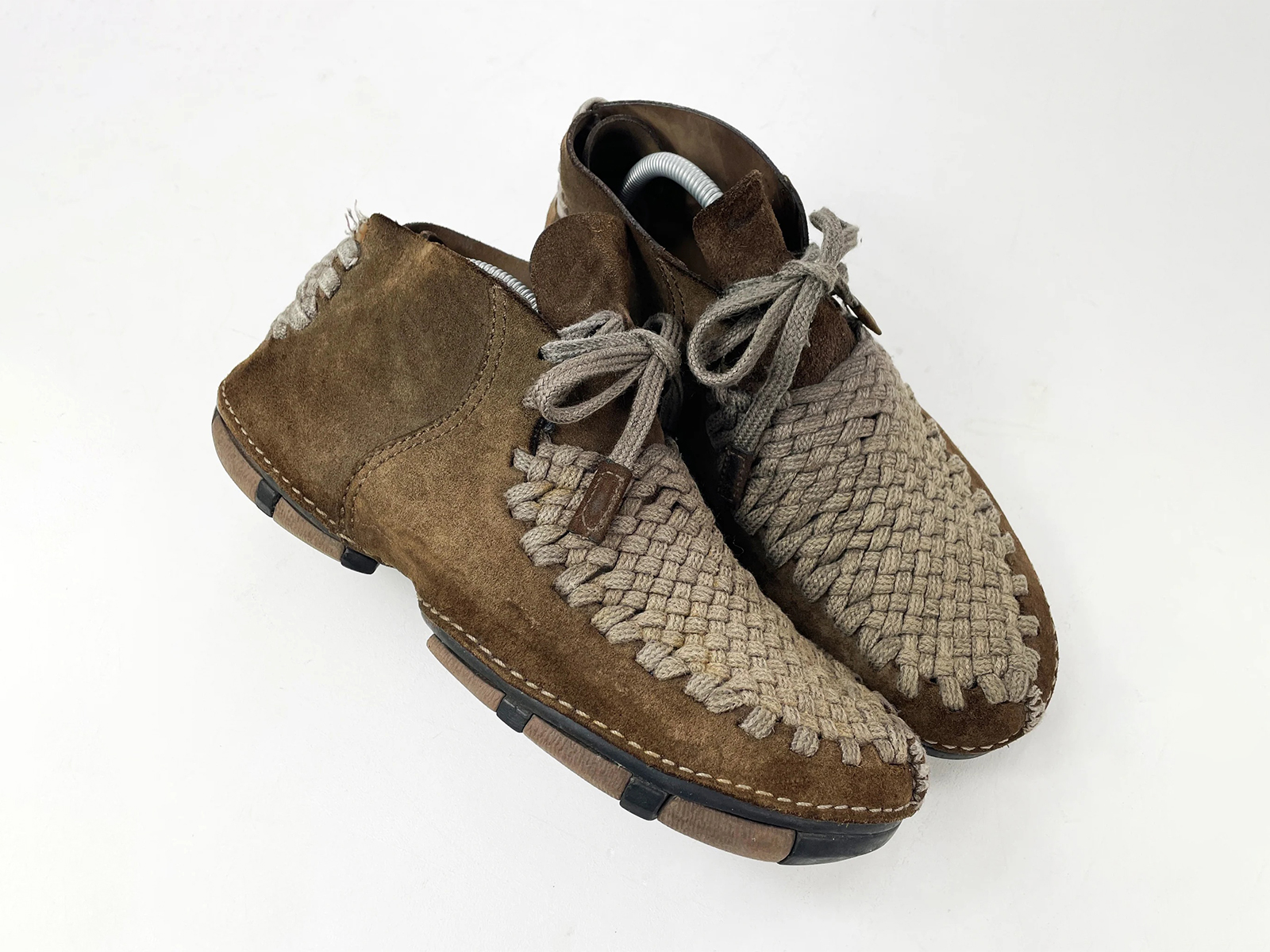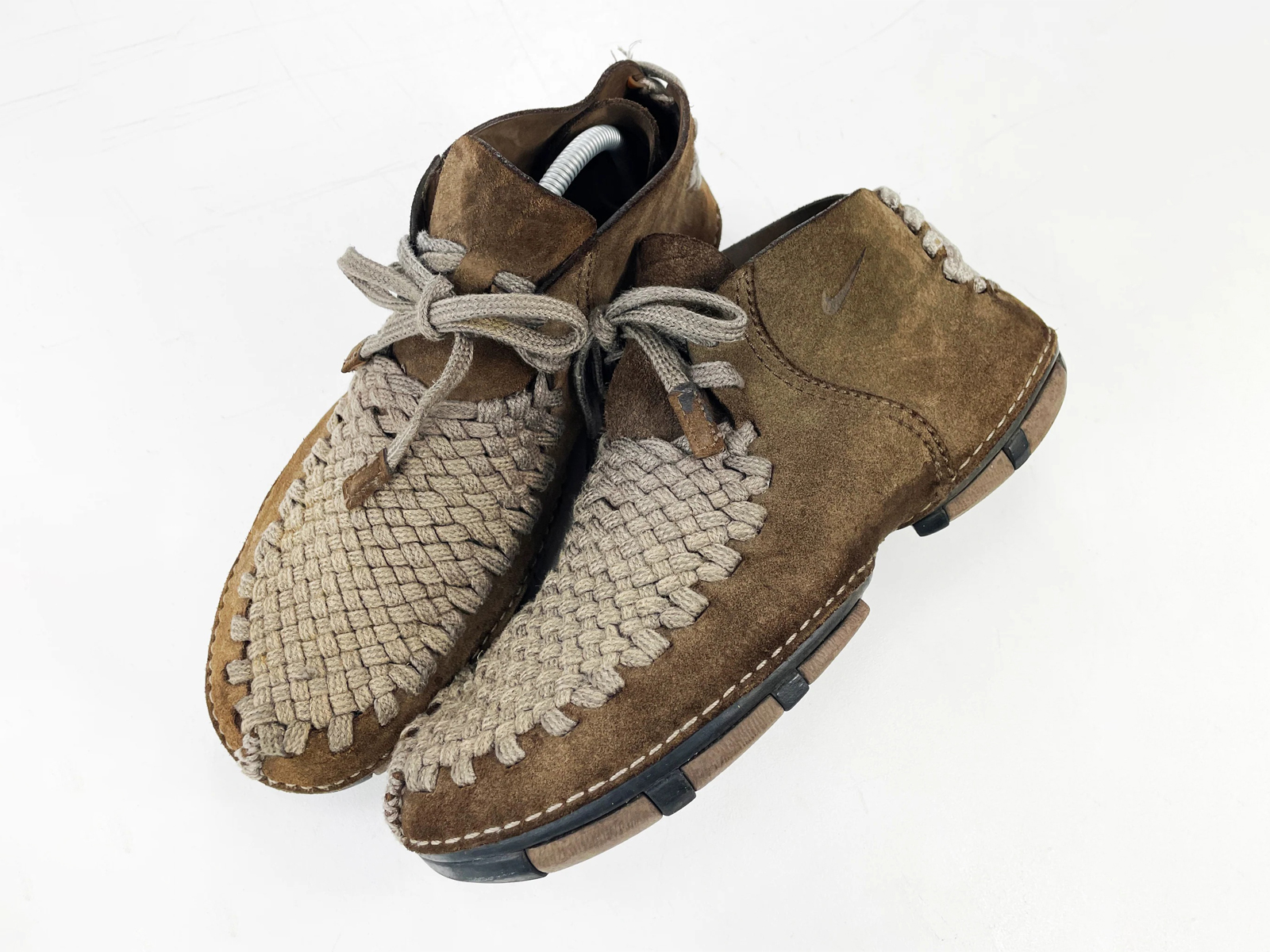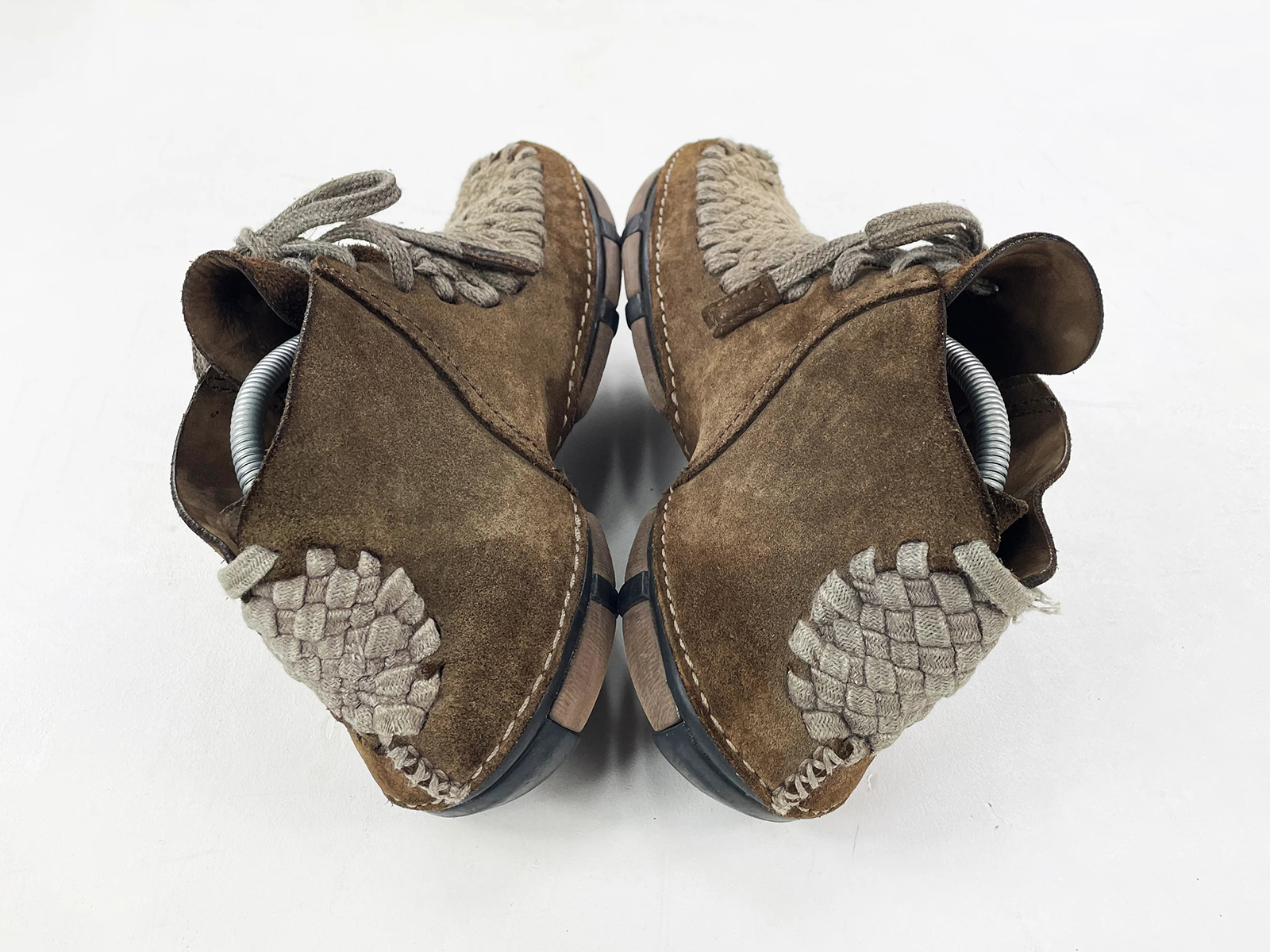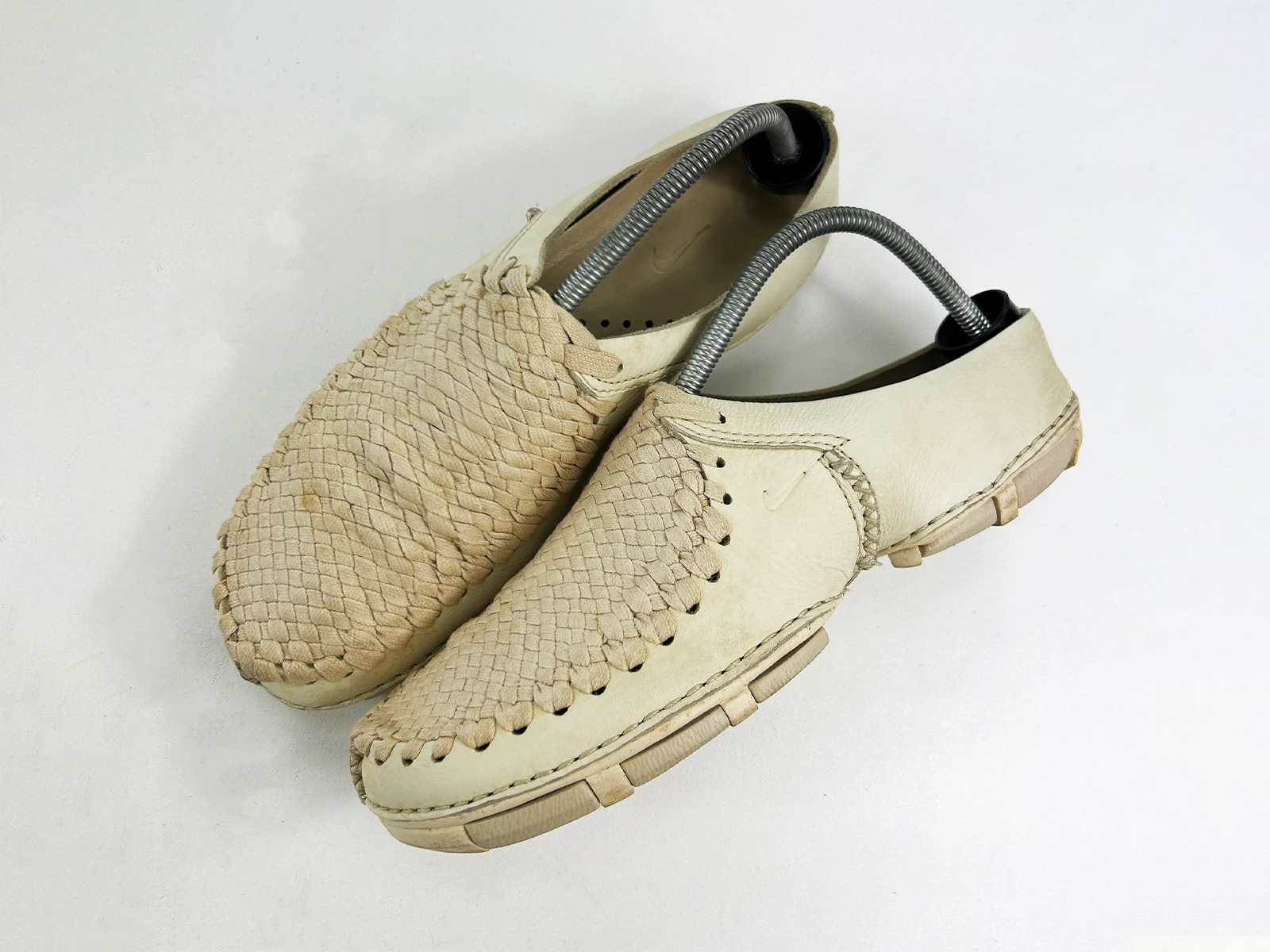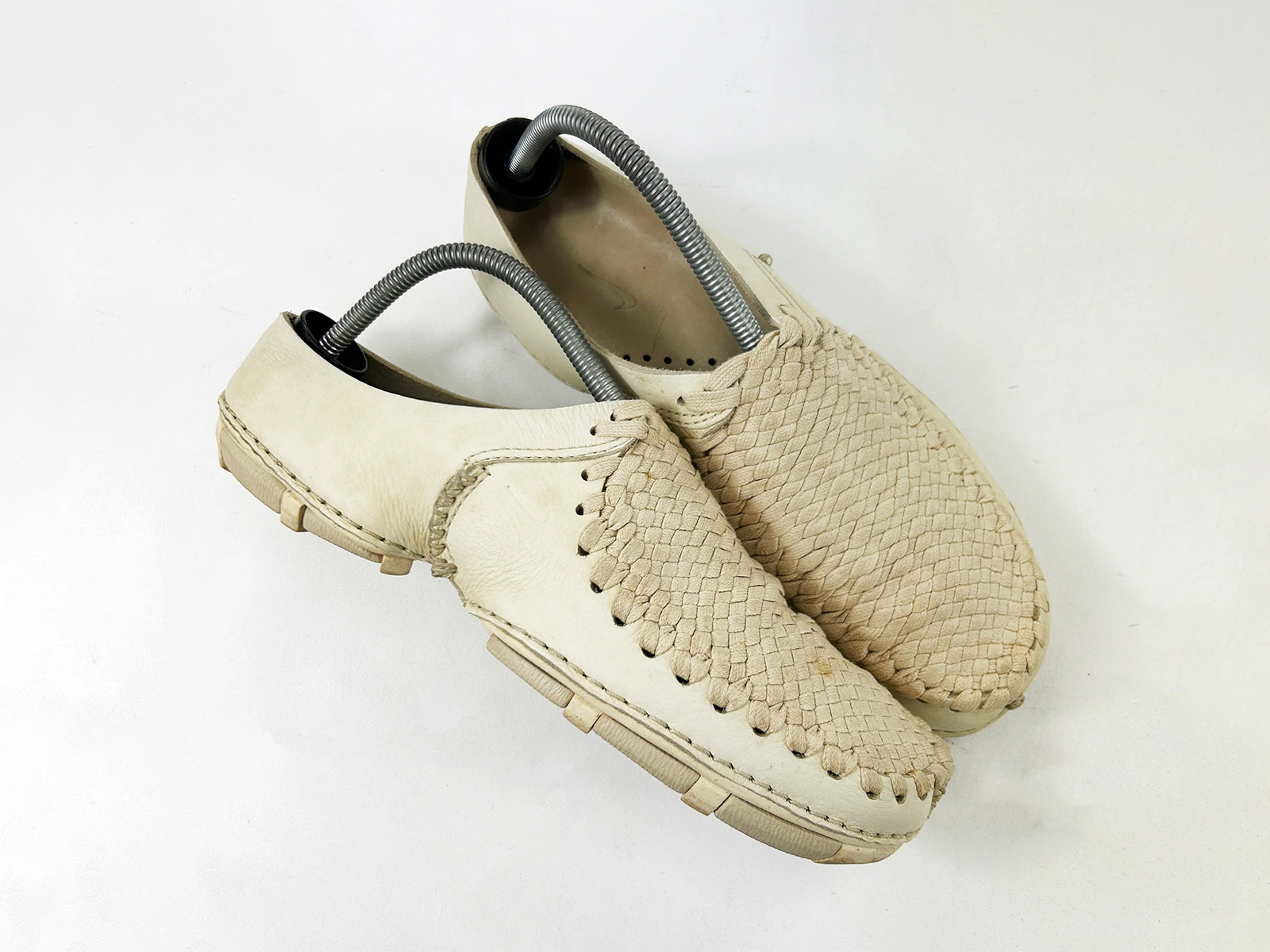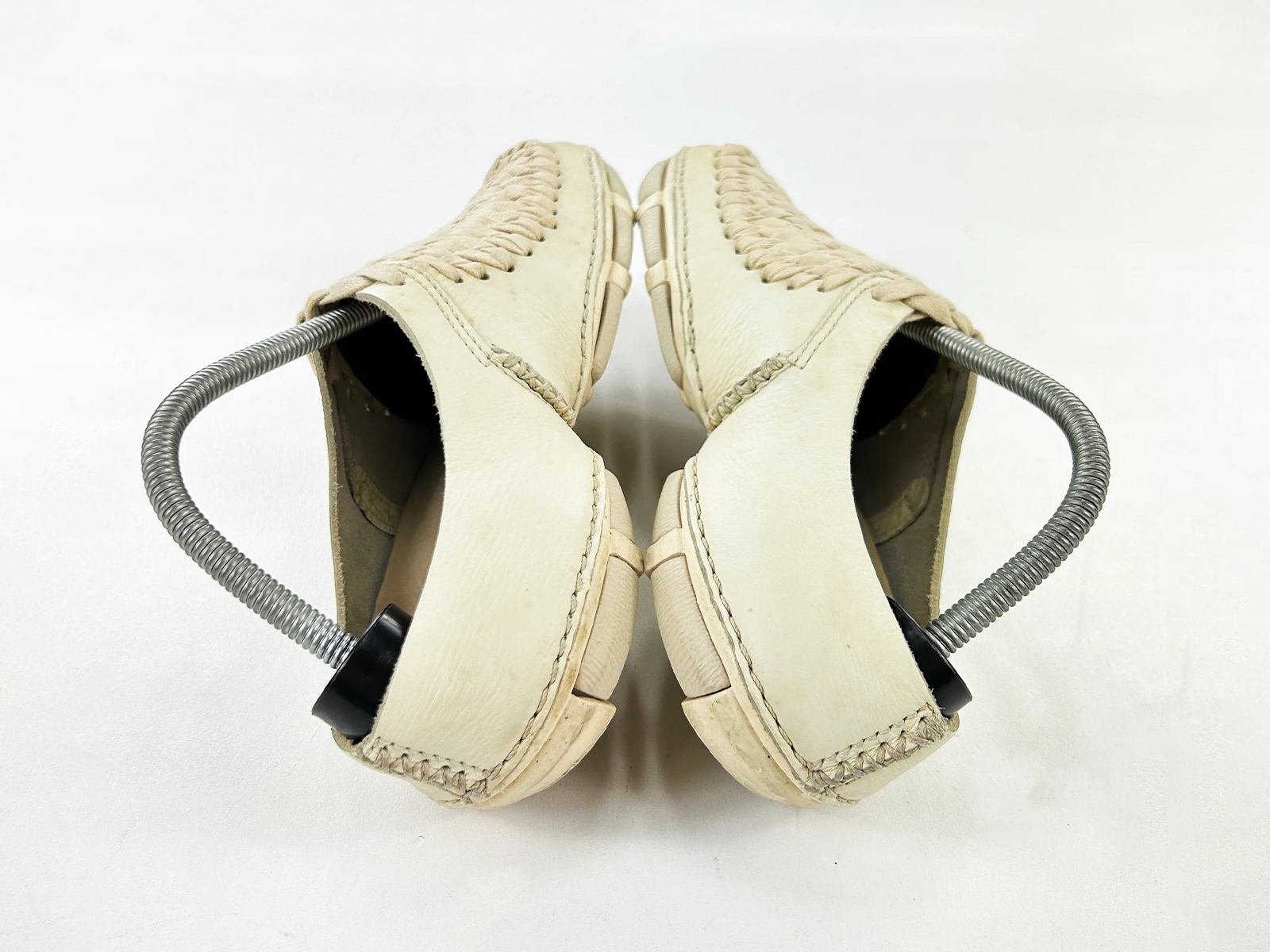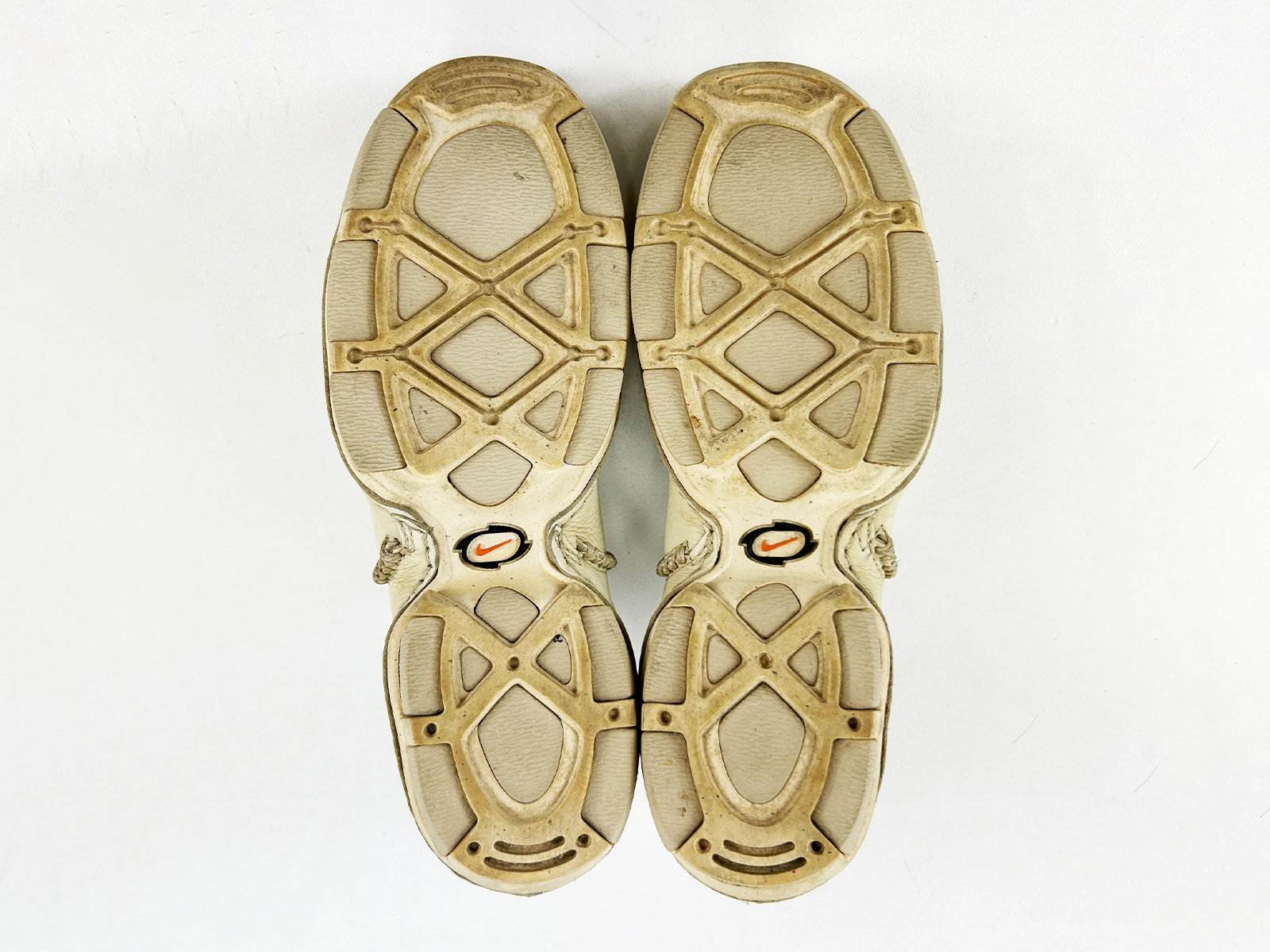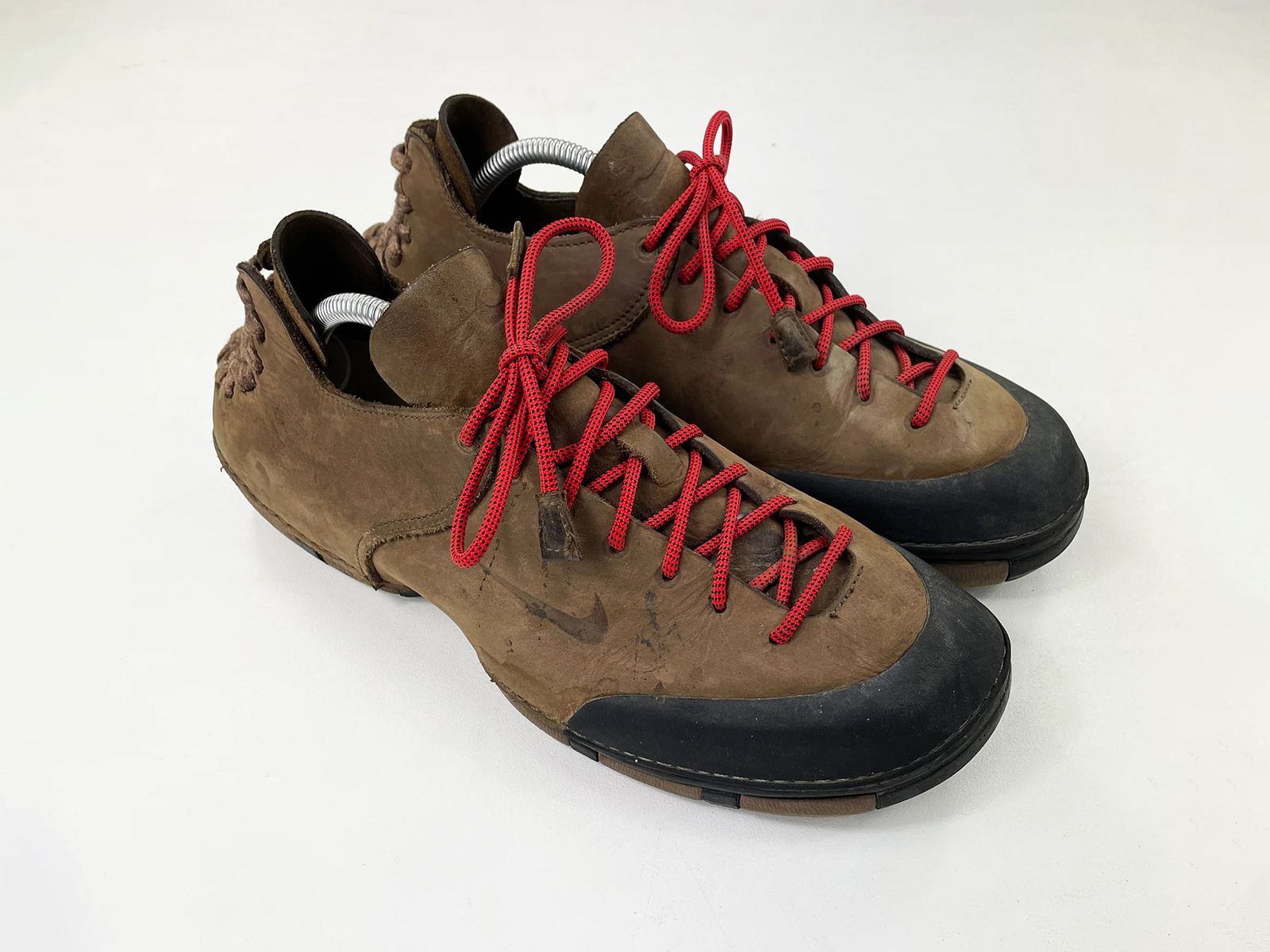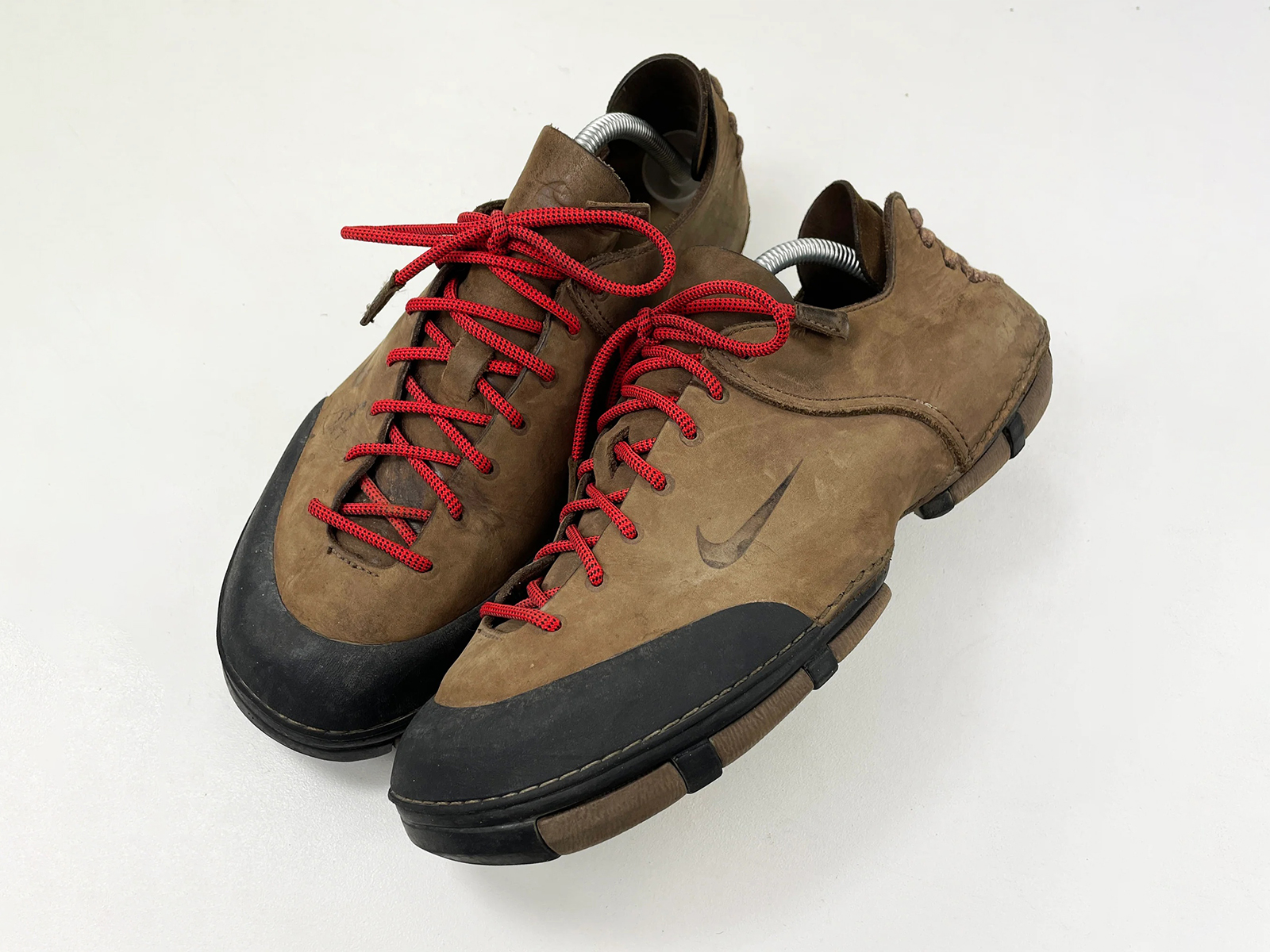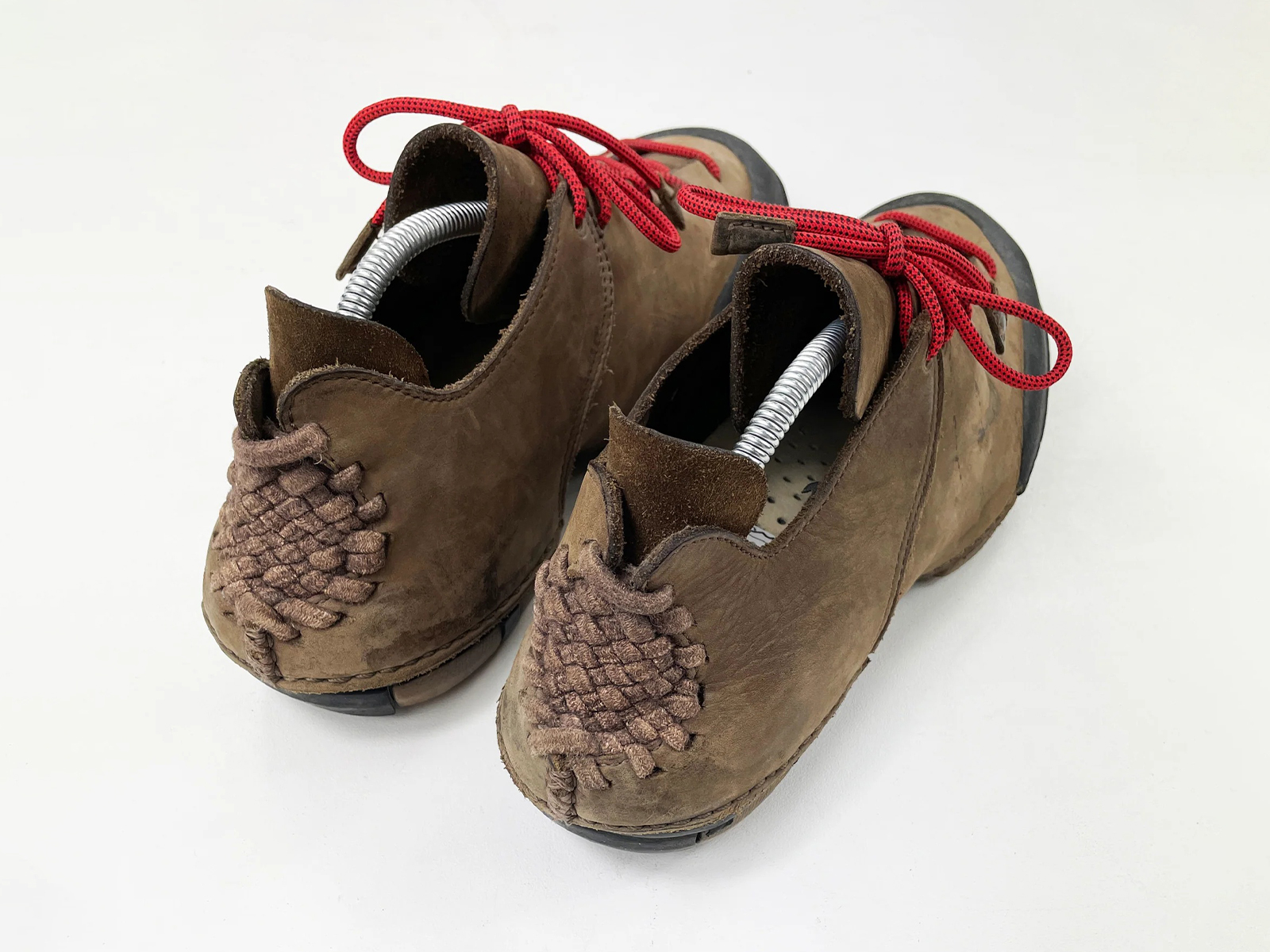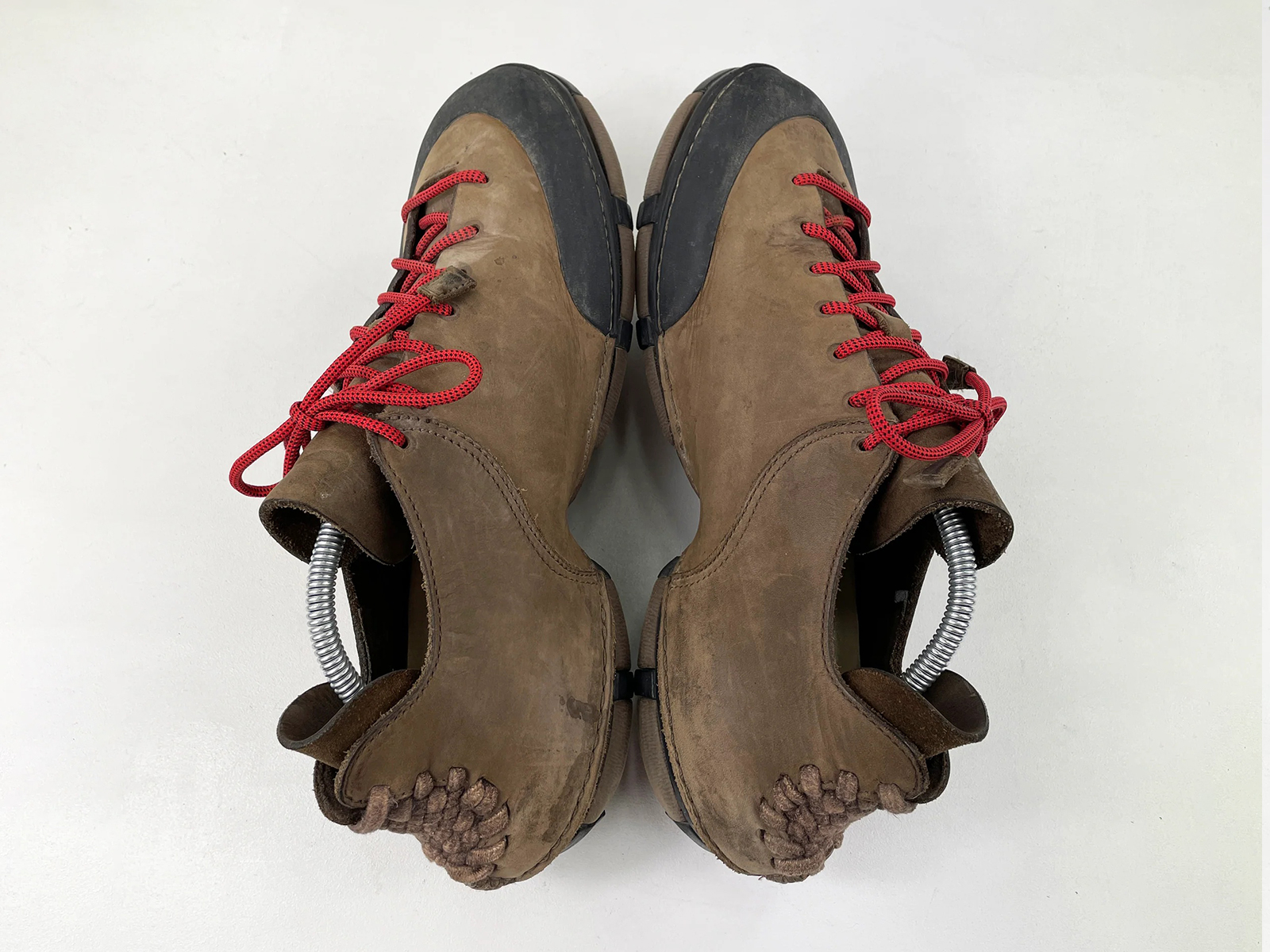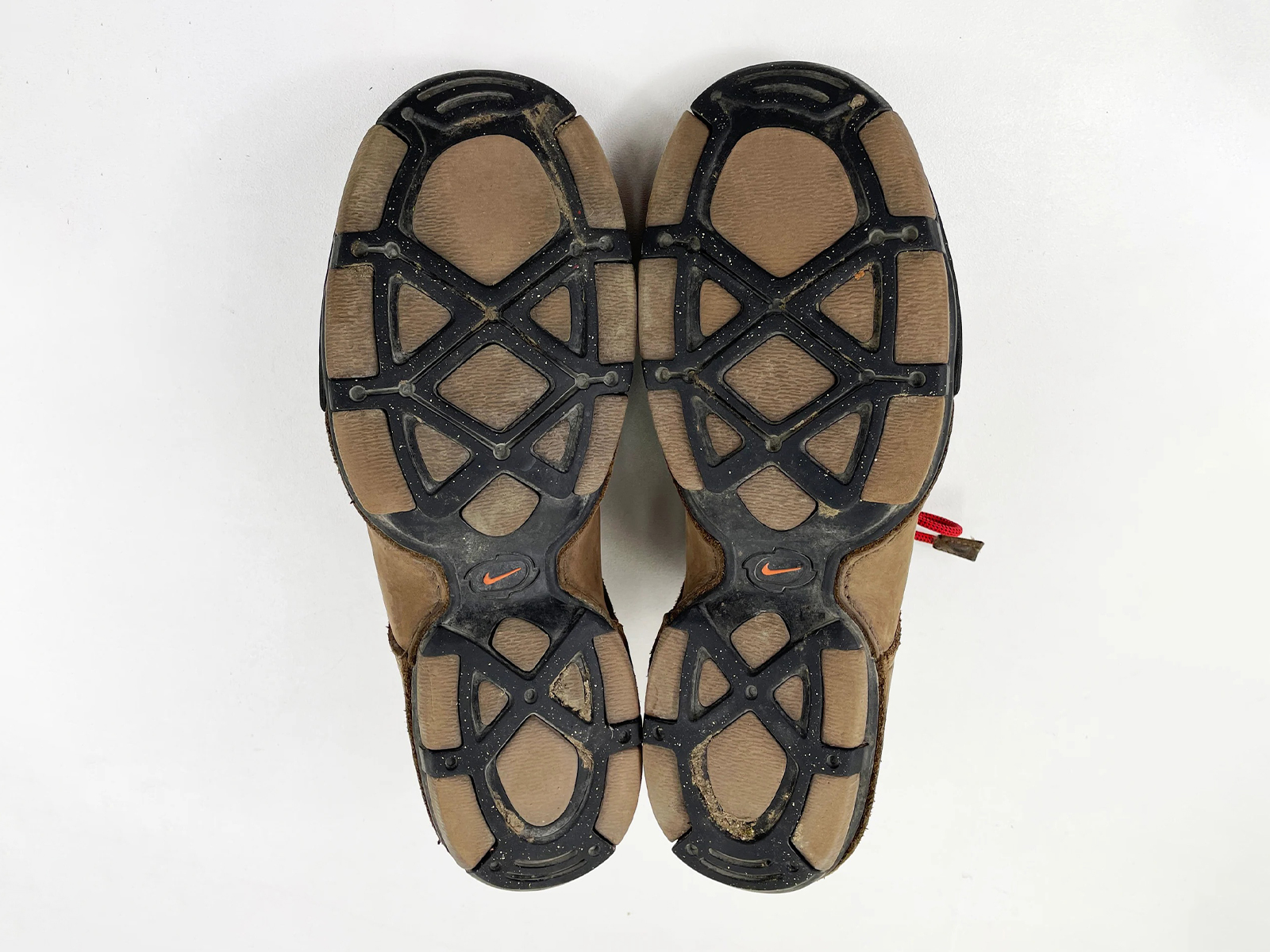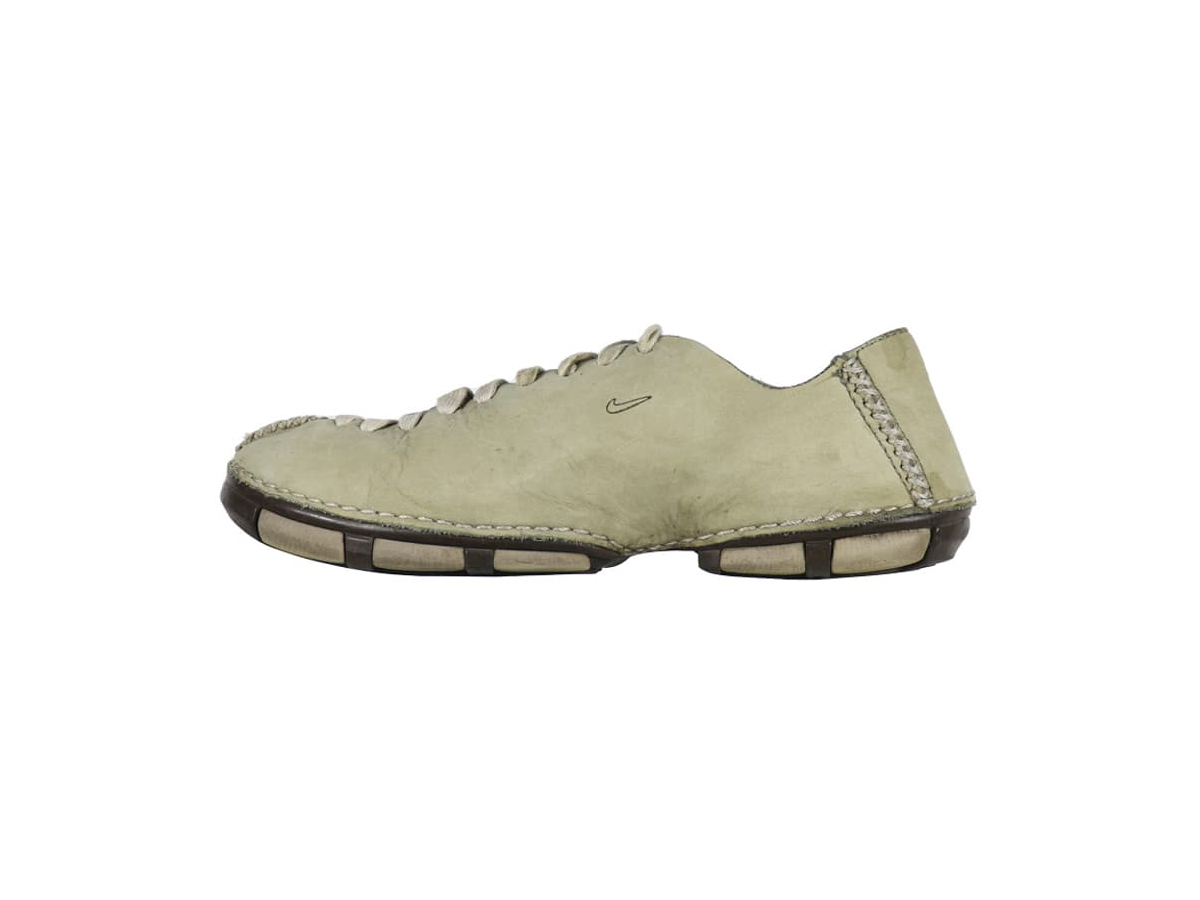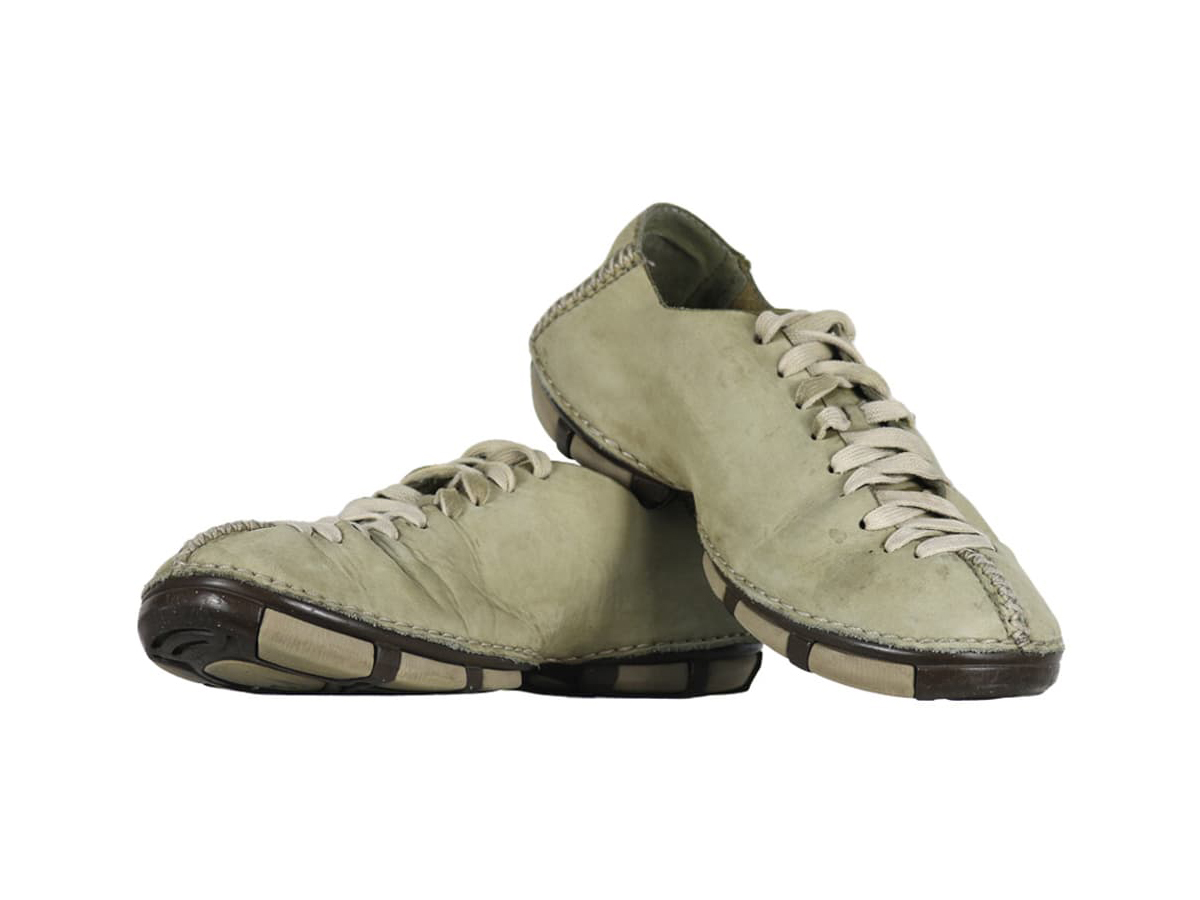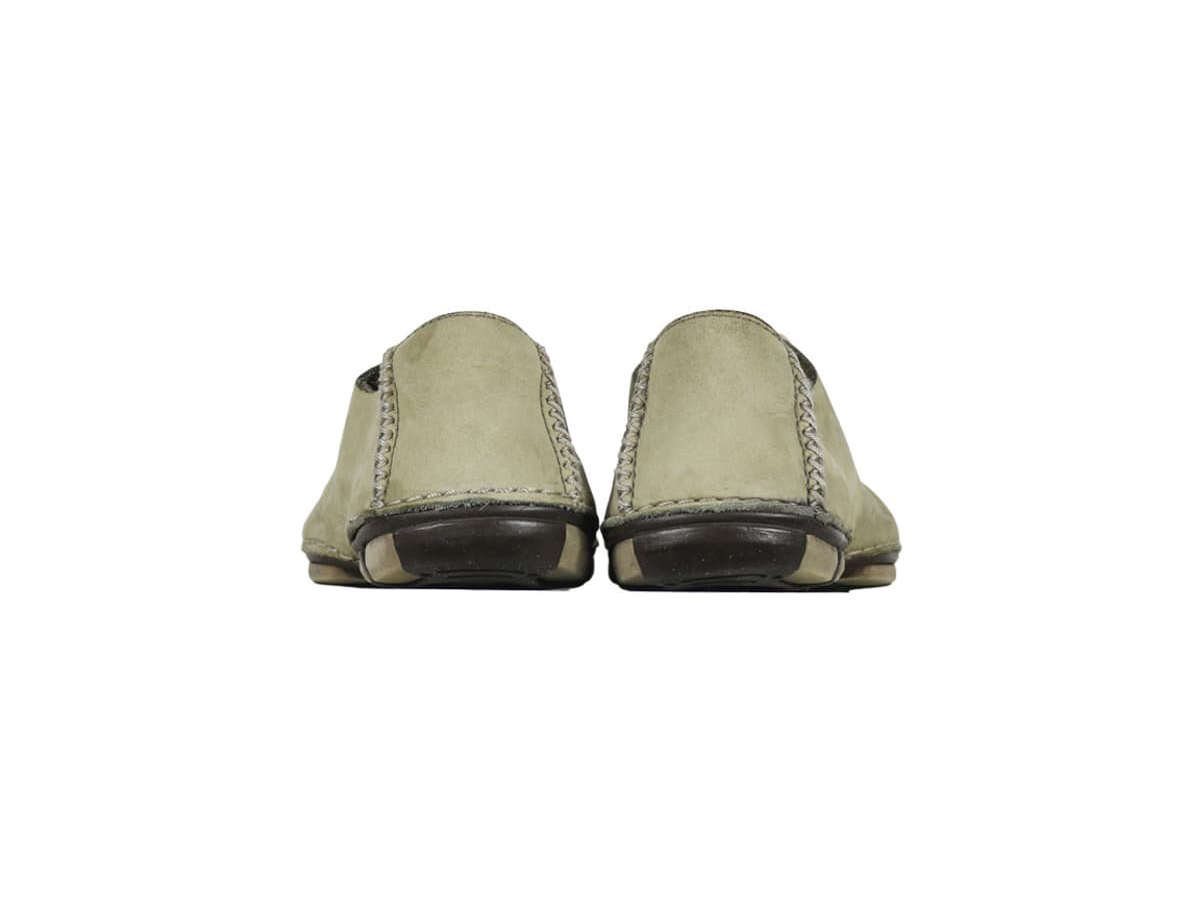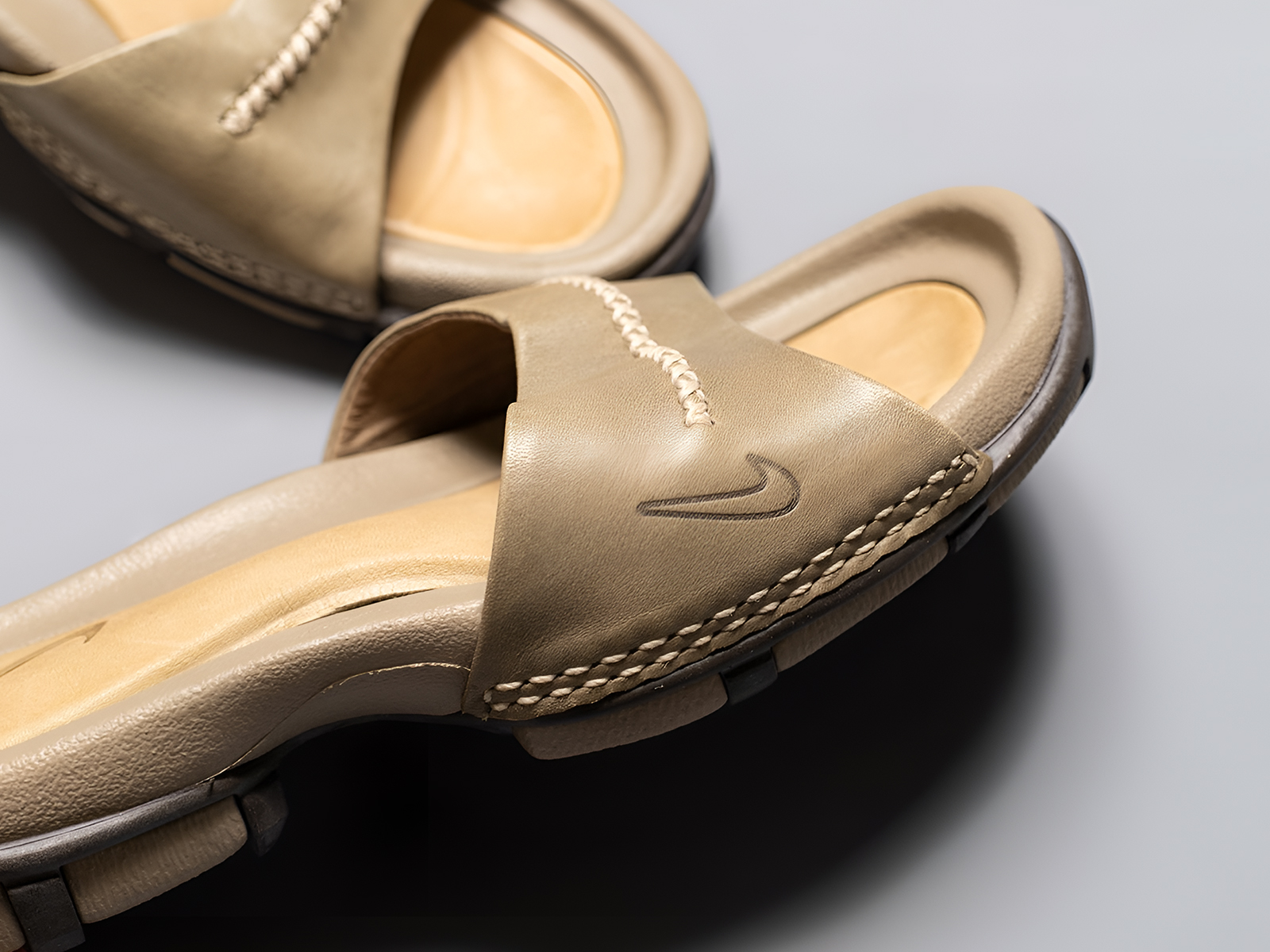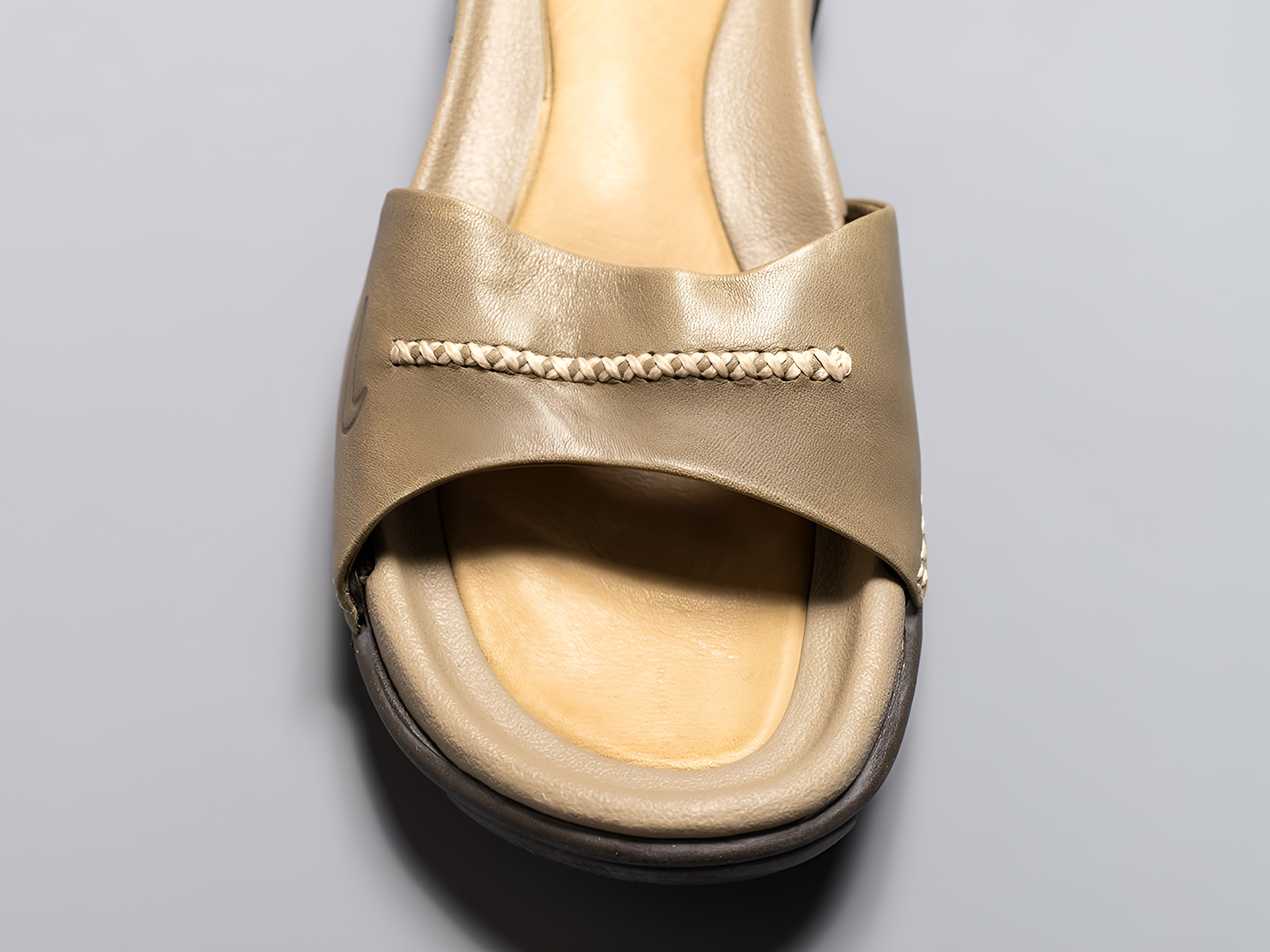In 2005, Nike launched its first “Considered” series — a short-lived but radical experiment in sustainable design. Built with hemp, minimal glue, and low-impact leather, these were the first five silhouettes introduced as part of the Considered series.
1. Nike Considered Boot
Nike’s flagship eco-shoe. Braided with a single hemp lace, the upper interlocked vegetable-tanned leather panels without adhesives. A segmented outsole clipped together using mechanical construction. Its moccasin-like build and stitched assembly reflected a shift toward handcrafted construction methods. It received “Best in Show” at the 2005 Industrial Design Excellence Awards.
2. Nike Considered Mule
The Boot’s backless sibling. This slip-on version preserved the woven construction and minimized adhesive use through stitched and interlocking components. Its minimalist upper and simple structure were designed for casual wear, while maintaining the same construction principles.
3. Nike Considered Rock
Designed as an “approach shoe” for hiking and bouldering, the Rock blended outdoor functionality with environmental responsibility. A braided heel spine and reinforced toe lent it durability, while red rope-style laces and low-profile construction emphasized utility and material restraint.
4. Nike Considered Gem
A low-profile lifestyle sneaker with a refined shape. Whip-stitched leather details, subtle hemp accents, and a sculpted sole created a balance between craftsmanship and wearability. Targeted at women, the Gem focused on understated construction and simplified material choices.
5. Nike Considered Slide
The simplest of the group: a sandal built with a wide leather strap, minimal sole, and braided hemp embellishment. Released in women’s sizing, it favored comfort and ease while maintaining the same low-impact materials and stitched assembly in place of traditional glue.
